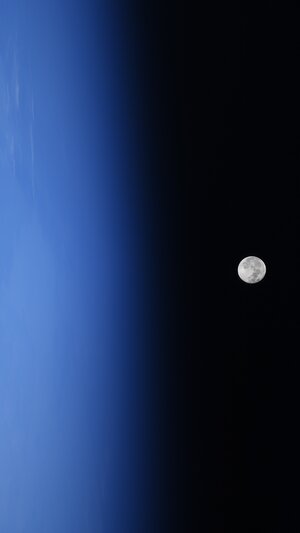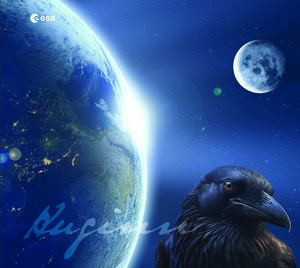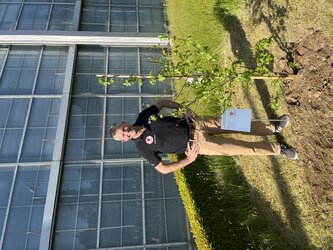Accept all cookies Accept only essential cookies See our Cookie Notice

About ESA
The European Space Agency (ESA) is Europe’s gateway to space. Its mission is to shape the development of Europe’s space capability and ensure that investment in space continues to deliver benefits to the citizens of Europe and the world.
Highlights
ESA - United space in Europe
This is ESA ESA facts Member States & Cooperating States Funding Director General Top management For Member State Delegations European vision European Space Policy ESA & EU Space Councils Responsibility & Sustainability Annual Report Calendar of meetings Corporate newsEstablishments & sites
ESA Headquarters ESA ESTEC ESA ESOC ESA ESRIN ESA EAC ESA ESAC Europe's Spaceport ESA ESEC ESA ECSAT Brussels Office Washington OfficeWorking with ESA
Business with ESA ESA Commercialisation Gateway Law at ESA Careers Cyber resilience at ESA IT at ESA Newsroom Partnerships Merchandising Licence Education Open Space Innovation Platform Integrity and Reporting Administrative Tribunal Health and SafetyMore about ESA
History ESA Historical Archives Exhibitions Publications Art & Culture ESA Merchandise Kids Diversity ESA Brand CentreLatest
Space in Member States
Find out more about space activities in our 23 Member States, and understand how ESA works together with their national agencies, institutions and organisations.
Science & Exploration
Exploring our Solar System and unlocking the secrets of the Universe
Go to topicAstronauts
Missions
Juice Euclid Webb Solar Orbiter BepiColombo Gaia ExoMars Cheops Exoplanet missions More missionsActivities
International Space Station Orion service module Gateway Concordia Caves & Pangaea BenefitsLatest
Space Safety
Protecting life and infrastructure on Earth and in orbit
Go to topicAsteroids
Asteroids and Planetary Defence Asteroid danger explained Flyeye telescope: asteroid detection Hera mission: asteroid deflection Near-Earth Object Coordination CentreSpace junk
About space debris Space debris by the numbers Space Environment Report In space refuelling, refurbishing and removingSafety from space
Clean Space ecodesign Zero Debris Technologies Space for Earth Supporting Sustainable DevelopmentLatest
Applications
Using space to benefit citizens and meet future challenges on Earth
Go to topicObserving the Earth
Observing the Earth Future EO Copernicus Meteorology Space for our climate Satellite missionsCommercialisation
ESA Commercialisation Gateway Open Space Innovation Platform Business Incubation ESA Space SolutionsLatest
Enabling & Support
Making space accessible and developing the technologies for the future
Go to topicBuilding missions
Space Engineering and Technology Test centre Laboratories Concurrent Design Facility Preparing for the future Shaping the Future Discovery and Preparation Advanced Concepts TeamSpace transportation
Space Transportation Ariane Vega Space Rider Future space transportation Boost! Europe's Spaceport Launches from Europe's Spaceport from 2012Latest

Clouds on Earth
Thank you for liking
You have already liked this page, you can only like it once!
Clouds captured from the International Space Station on 9 September 2023 by ESA astronaut Andreas Mogensen during his Huginn Mission. When Andreas shared the picture on social media, he said:
"Clouds cover an immense area of our planet every day (which can make photographing Earth frustrating at times) and play an important role in shaping the Earth’s climate.
Sunlight that hits Earth, is either absorbed by Earth or reflected back into space. When sunlight is absorbed, it heats up the planet. Hence, when more sunlight is reflected back into space, there is less energy to heat the planet. Clouds are one of the primary features that reflect sunlight back into space, together with snow and ice-covered ground. Thus, the amount of cloud cover and the amount of ground covered by glaciers, snow, and ice determine how much sunlight is reflected into space and thus, how much energy is available from the sun to heat Earth. This balance between absorbed and reflected sunlight determines the energy balance of Earth and is important for understanding Earth’s climate.
This week I will start the EarthShine experiment, where I will take photos of the Moon to measure the amount of sunlight that Earth reflects into space. Some of the reflected sunlight from Earth hits the Moon and lights up the Moon’s surface. Normally, this is difficult to see because the direct sunlight that hits the Moon outshines the Earthshine. But by taking pictures shortly before the New Moon, when the Moon is just a very thin crescent, it is possible to see the Earthshine reflected onto the Moon’s surface.
By doing this from the International Space Station, the images are undisturbed by Earth’s atmosphere"
Visit Huginn mission page to learn more about Andreas' mission.
-
CREDIT
ESA/NASA-A.Mogensen -
LICENCE
ESA Standard Licence

Full Moon from the International Space Station

Earthshine graph

Huginn stamp folder

Tree planting for the Huginn mission















 Germany
Germany
 Austria
Austria
 Belgium
Belgium
 Denmark
Denmark
 Spain
Spain
 Estonia
Estonia
 Finland
Finland
 France
France
 Greece
Greece
 Hungary
Hungary
 Ireland
Ireland
 Italy
Italy
 Luxembourg
Luxembourg
 Norway
Norway
 The Netherlands
The Netherlands
 Poland
Poland
 Portugal
Portugal
 Czechia
Czechia
 Romania
Romania
 United Kingdom
United Kingdom
 Slovenia
Slovenia
 Sweden
Sweden
 Switzerland
Switzerland























